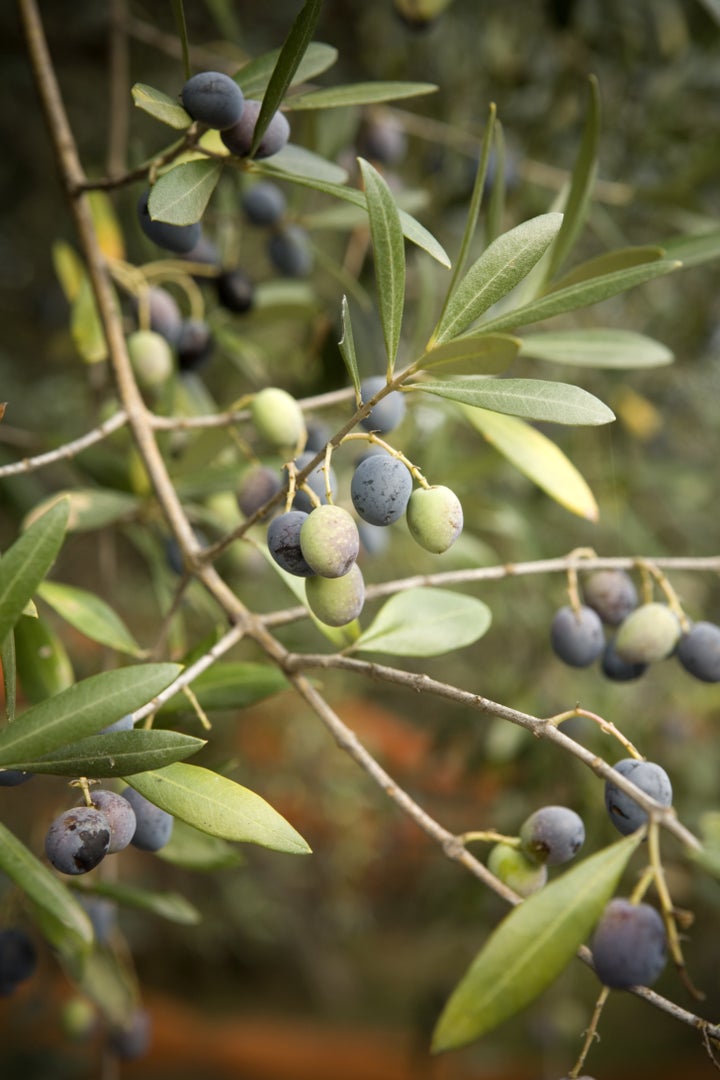
Ever wonder about the difference between black olives and green olives? If you surmised that they're just different varieties, in the way that a Red Delicious apple is different from a Yellow Delicious, you'd be wrong. We chatted with Shea Rosen, Director of Product Development at Mezzetta (the unofficial olive experts of the world), to get the scoop. Here's what we learned:
How are black olives different from green olives?
"The color of the olive corresponds to how ripe they are when picked, in addition to the curing process they undergo. Green olives are picked before ripening, and black olives are picked while ripe, which is when the color has turned from green to black. Raw and freshly picked olives are inedible due to their very strong bitter flavor, so both green and ripe varieties are cured, either by being packed in salt, brine, or water, before being eaten."
How does ripeness affect their taste?
"Generally, green olives are denser, firmer and more bitter than black olives. But the taste and texture of any olive depends on the method and duration of the curing process."
Is one healthier than the other?
"There are no nutritional differences between green and black olives. Olives are endowed with high amounts of good monounsaturated fat and minerals, such as iron and copper. They’re also rich in vitamin E, polyphenols and flavonoids, which are antioxidants [that] have anti-inflammatory benefits."
If you don't like olives, which variety is the most mild?
"Oxidized black olives [typically canned] are truly the most mild, but olive aficionados don’t really categorize them with natural olives. The oxidized black olive process does not leave a distinguishing flavor between the olive varieties; they typically taste the same."
